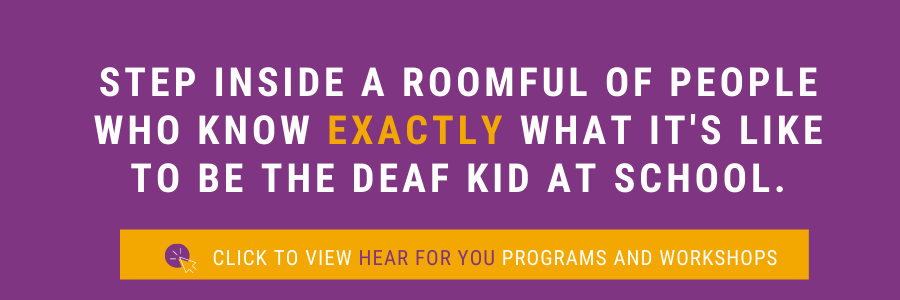As many students progressively move back to a classroom learning environment, it is important to understand and acknowledge the challenges that deaf and hard of hearing students face within a classroom environment. It is also crucial to understand the ways that classroom learning can be improved to support those deaf and hard of hearing students.
The importance of the classroom’s physical environment for deaf and hard of hearing students
The physical environment of a classroom has a significant impact on the learning and behaviour of students. Studies have suggested that the way that a classroom is arranged, including the seating arrangement, lighting and overall classroom organisation can actively influence the learning experience and capabilities of deaf and hard of hearing students. For these students, the physical environment of the classroom is extremely important. Behavioural academic engagement (Fredericks, Blumenfeld & Paris 2004) is linked to a student’s involvement in academic tasks within the classroom. These can include:
- Remaining focused on set tasks
- Following instructions provided by the teacher
- Participating in classroom discussion
- Completing set tasks.
Some of the classroom features that can impact deaf and hard of hearing students and their academic engagement and performance include:
- Visual or auditory distractions
- Poor lighting
- Inability to clearly see the front of the classroom, such as the whiteboard or screen the teacher is presenting on
- Being seated near doors or windows with high amounts of student-traffic or commotion.
Tips to reducing classroom acoustics for deaf and hard of hearing students
Classroom acoustics can often be an issue for deaf and hard of hearing students in a classroom environment. However there are many ways that these can be solved and improved.
- Visual access: deaf and hard of hearing students require full visual access during class discussions and lessons. The best way to achieve this is through the classroom’s seating arrangement and it is known that positioning the tables and chairs in a ‘U’ shape allows for the best engagement and participation outcomes for these students, as it allows students to have full access to the discussion and participate effectively.
- Lighting: fluorescent lights have a special sound which interferes with hearing aids and cochlear implants, which creates a difficulty for deaf and hard of hearing students. It is useful to consider the positioning of the window in relation to the teacher or instructor.
- Lighting: is also important for any deaf student who rely on Auslan interpreters, as they need to be able to see clearly the interpreter in the classroom who is translating what is spoken by the teacher into their language, Auslan.
- Switch on captioning on any visual presentations such as films, educational instruction moving visuals, or television broadcasts.
- Use carpet and soft surfaces where possible within the learning space.
- Place silencers on chairs to eliminate excess noise when moving around the classroom. This can be distracting for hard of hearing students and they may lose focus as a result.
These are some useful tips to creating an accessible and comfortable learning environment in the classroom for all students, but especially for those students who suffer from hearing loss and need that extra support to maintain their educational performance and academic engagement.
Life Goals and Skills Courses Available Online
We have a range of online programs available to deaf or heard of hearing students. Visit our website to see our latest range of Life Goals and Skills courses available. Our courses cover:
- Graphic Design
- Film Making
- Coding
- Careers: CV/Resume, Interview Skills and Inclusion in the workplace
- Communication Skills
Author: Hear For You
Published: 10 June 2020




